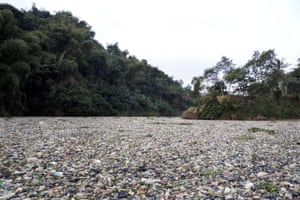The smell is the first thing that hits you on the banks of the Citarum River in West Java, Indonesia. The odour is dense: rubbish rotting in hot sun mixed in with an acrid tone of chemical waste.
Some 9 million people live in close contact with the river, where levels of faecal coliform bacteria are more than 5,000 times mandatory limits, according to the findings of the Asian Development Bank in 2013.
Lead levels are more than 1,000 times the US Environmental Protection Agency drinking water standard and levels of other heavy metals such as aluminium, iron and manganese are above the international average.

Those living along the river have nowhere to dispose of rubbish, so they either burn it or throw it into the river.
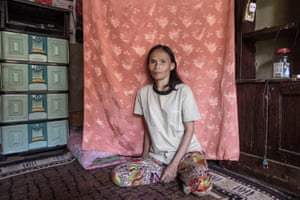
Iim Halimah, 47, has three children. Her husband, Jajang Suherman, died of tuberculosis four years ago, aged 46, after years of dermatitis – a common condition along the Citarum. Halimah suffers from chronic bronchitis, a condition worsened by the pollution and malnutrition. She says the doctor has told her for years not to use the river water, but she has no alternative.
There are more than 2,000 companies in the area – mostly textile factories built near the river because they need large quantities of water. In recent years they have discharged enormous amounts of chemical waste directly into the river.
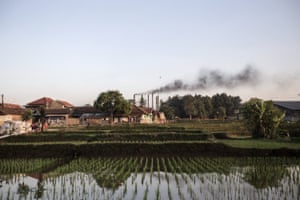
- The village of Sukamaju on the Citarum River. Factories belch out smoke in the distance
Mountains of river sediment are piled on the banks of the Citarum. Thousands live on these wastelands. Unemployed young people, families displaced by the frequent floods, or so-called ‘scavengers’, the very poor waste collectors who survive by selling recyclable rubbish.
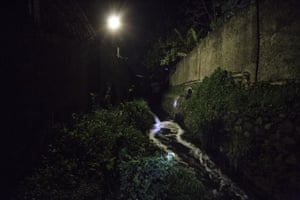



- In the industrial area of Majalya, a textile factory discharges waste directly into the river, while children play among the toxic rubbish
Many people suffer from dermatitis, contact rashes, intestinal problems; but also from delays in child development, renal failure, chronic bronchitis and a significant incidence of tumours.
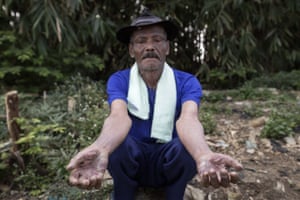
The luckiest river dwellers access wastewater from the local industries, who draw water directly from aquifers up to 150m deep and, after partially purifying it, make it available to the neighbouring villages.
But most have to rely on contaminated water directly from the Citarum, to wash themselves and their clothes, and for drinking and cooking.
People and their animals also ingest contaminants through their food, mostly rice, which is irrigated with water from factories and villages or from the Citarum and its tributaries.

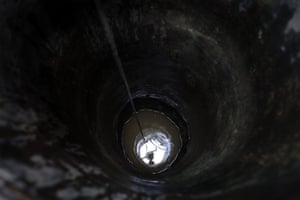
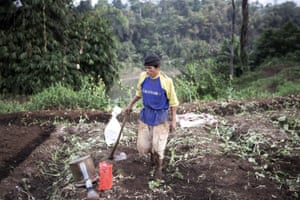
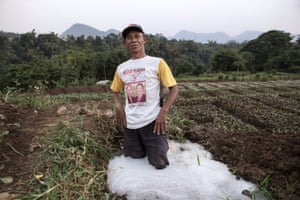
- People living along the Citarum have to wash and cook with contaminated water. The water from the well can range from yellow to black in colour, and the farmers irrigate their fields with water foaming with detergents
Despite the filth, fishing is still widely practised along the river. The catch, contaminated with heavy metals and microplastics, is sold and eaten as much in areas adjacent to the river as on the tables of Jakarta. The number of fish species in the Citarum has decreased by 60% since 2008.
The Indonesian government, after pressure from international organisations such as Greenpeace about the state of the river, has established a seven-year cleaning programme for the Citarum, with the goal of making its water drinkable by 2025.

- The fishermen have to build floating fences and fish among the rubbish
The programme is also supported by the International Monetary Fund and the Asian Development Bank, which in 2009 committed $500m (£387m) to finance the river’s rehabilitation. The cleaning operation consists of combating soil erosion and agricultural runoff by reforesting surrounding mountains; extracting the toxic sediment from the river with large excavators; prohibiting factories from discharging wastewater until after filtration and purification, and setting up environmental education projects.

- An environmental activist patrols a canal in the industrial area looking for hidden discharges into the river
According to local activists, despite the bans, many factories continue to discharge waste via concealed pipes. Even if discovered, bribes to the right people ensure they remain.
However, recent environmental awareness initiatives by the government and some campaign groups mean a new wind might be blowing in Indonesia.
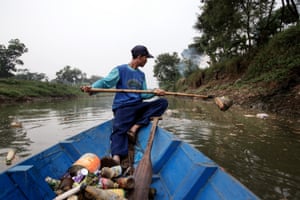
- ‘Scavenger’ Mr Iwan, 34, collects recyclable material along the Citarum
But for now at least, every day along the Citarum people are still being poisoned by the dioxins and hydrocarbons in the air from coal-fired textile factories and by the water of a river that was once considered a paradise.
